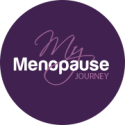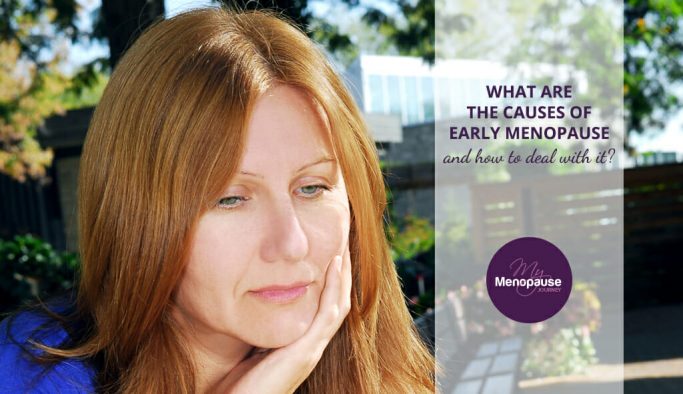Midlife can feel like our body is going through a complete overhaul, can’t it?
Hormones are shifting, moods may feel unpredictable, and your body just doesn’t respond the way it used to. You might blame PMS — but what if there’s something more going on?
Many women in their 40s and 50s experience a cluster of symptoms that don’t quite fit the usual monthly pattern. Estrogen dominance symptoms — something you might have heard floating around, especially when talking about hormonal and midlife health.
In this guide, we’ll explore what estrogen dominance really means, how to tell the difference between it and PMS, and how to bring your hormones back into balance — naturally, gently, and on your own terms.


Table of Contents
PMS vs. Estrogen Dominance — What’s the Difference?
Before we dive deeper, let’s clarify something important — how do you tell the difference between PMS and estrogen dominance? After all, the symptoms can look quite similar, especially in your 40s.
Here’s a quick comparison:
| Symptom | PMS (Premenstrual Syndrome) | Estrogen Dominance |
| Timing | Occurs 1–2 weeks before your period, then goes away | Persistent throughout the cycle or worsens over time |
| Mood Changes | Irritability, sadness, tension near period | Mood swings, anxiety, or depression that feel constant or worsen |
| Physical Symptoms | Bloating, breast tenderness, fatigue — temporary | Ongoing bloating, breast issues, weight gain, thyroid problems |
| Cycle Regularity | Menstrual cycle remains fairly regular | Often linked to heavy, painful, or irregular periods |
| Age Group | More common in younger women | Often shows up in midlife (ages 35–55), especially in perimenopause |
Key takeaway: If symptoms seem cyclical and predictable, PMS might be the cause. But if they’re sticking around or getting worse as you age, estrogen dominance could be at play.
What Is Estrogen Dominance and Why Does It Happen in Midlife?
When estrogen levels are too high, it can cause a cascade of issues throughout the body. Here’s a breakdown of some common effects of estrogen dominance:
Mood Swings & Anxiety: Estrogen influences your brain’s neurotransmitters — which can lead to mood swings, feelings of anxiety or depression.
Weight Gain: Elevated estrogen levels can increase fat storage — particularly in the lower abdomen, thighs and hips.
Breast Issues: Estrogen dominance may lead to fibrocystic breasts — causing tenderness, swelling or lumps.
Thyroid Dysfunction: Excess estrogen can interfere with thyroid function — leading to symptoms like fatigue, weight gain and hair thinning.
Over time, if left unaddressed, estrogen dominance can also increase the risk of conditions like endometriosis, fibroids and breast cancer.
Many midlife women tend to experience these symptoms, too:
Heavy, painful periods or irregular cycles
Bloating and water retention
Fatigue that doesn’t seem to go away no matter how much you sleep
Headaches or migraines, especially around your cycle
Sleep disturbances or insomnia
If you’re nodding along, you’re not alone. Many women in their 40s and 50s experience these signs, often without realizing that it could be estrogen dominance at the root!
What Causes Estrogen Dominance During Perimenopause and Menopause?
So, what’s causing all this hormonal chaos and estrogen dominance symptoms in midlife?
Well, estrogen dominance can occur for several reasons, and understanding these causes can help you get a clearer picture of what’s happening:
1. Declining progesterone levels: As we approach perimenopause, progesterone levels naturally decline. Since progesterone balances estrogen, this can result in an estrogen-heavy situation in the body.
2. Environmental factors: Chemicals in our environment, such as BPA in plastics or pesticides in food, can act like estrogen (as in “fake estrogens”) in the body and contribute to hormonal imbalances.
3. Stress: Chronic stress leads to increased production of cortisol, which can interfere with the balance of estrogen and progesterone — worsening the “dominance”.
4. Poor liver function: Your liver plays a major role in detoxifying excess estrogen. If it’s not functioning properly (due to poor diet, alcohol consumption or toxin exposure, estrogen can accumulate in your system and affect the liver!
Can Estrogen Dominance Cause Weight Gain?
One of the most frustrating signs of estrogen dominance is weight gain, particularly in areas that don’t typically gain weight.
Due to this hormonal imbalance, many women find themselves putting on pounds around their belly or hips — places where estrogen tends to store fat!
So, yes… while diet and exercise are essential to keeping your happy weight, gaining isn’t just about extra calories or a sedentary lifestyle. The state of your hormonal levels can also affect how your body stores fat!
And in this case, estrogen is known to promote fat retention. So, when it’s in excess, it leads to an increased fat deposit in the abdomen — which is usually harder to shed.
But the good news? By balancing estrogen and focusing on healthy eating, exercise and stress management, many women see improvements in their weight and overall health.
Ready to keep those estrogen dominance symptoms out of your watch? Find out some of the top natural options you can go for in the next section!
5 Natural Remedies to Balance Estrogen and Restore Hormonal Health
The good news is that there are natural ways to address estrogen dominance and restore hormone balance. Here are some strategies to consider:
1. Eat a Balanced Diet: Focus on whole, organic foods. Cruciferous vegetables like broccoli and cauliflower help to detoxify excess estrogen from the liver.
2. Reduce Stress: Yoga, meditation and deep breathing exercises are proven ways reduce cortisol levels and improve your overall hormonal balance.
3. Exercise Regularly: Regular physical activity helps reduce excess estrogen and promotes healthier metabolism.
4. Consider Supplements: Some women find relief with supplements like vitex (chaste tree berry) and probiotic-rich foods to support hormonal harmony
5. Detoxify Your Body: Drink plenty of water, eat fiber-rich foods, avoid chemical-rich products (both for personal care and home cleaning) and consider a gentle detox to support liver function. If you didn’t already know, fasting is one of the best ways to naturally put your body in a complete detox state!
Try to incorporate these habits more into your daily life and watch those estrogen dominance symptoms fade into thin air!
When Should You Talk to a Doctor About Estrogen Imbalance?
While natural remedies can go a long way, it’s important to seek medical advice if your symptoms are severe or don’t seem to improve with lifestyle changes.
Your doctor can help:
✔️Run blood tests to check estrogen and progesterone levels
✔️Recommend hormone replacement therapy (HRT), its bioidentical version or other hormonal treatments
✔️Rule out other conditions like thyroid issues, fibroids or endometriosis
These tests can be your additional tools to overcoming hormonal imbalances — especially if you’re experiencing severe mood swings, uncontrollable weight gain or debilitating fatigue.
Yup, it’s always a good idea to work with your healthcare provider and talk about your options!
Final Thoughts on Managing Estrogen Dominance
You don’t have to settle for feeling “off” all the time. Yes — estrogen dominance symptoms are common in midlife, but that doesn’t mean you’re stuck with it!
With a few small, consistent changes to your lifestyle, diet, and stress levels, you can feel more grounded in your body again.
And whether you’re just starting to notice symptoms or you’ve been struggling for a while, there’s a path forward that doesn’t require extremes — just gentle, doable shifts that support real balance!
If you’d like a trusted guide to help you get started, take a look at the Menopause Clarity Kit. It’s packed with practical tools and insights to help you navigate this season of change with confidence and clarity!
References:
pmc.ncbi.nlm.nih.gov/articles/PMC4505810/
journals.sagepub.com/doi/full/10.2217/17455057.3.4.387
johnleemd.com/estrogen-dominance
drnorthrup.com/estrogen-dominance/
👉 What to Do Next
Don’t go just yet — especially if you’ve been feeling off and no one’s given you real answers.
Go to the START HERE page.
It’s where things begin to feel clearer. No more second-guessing, no more sorting through conflicting advice. Just calm, honest support for where you are right now.
And if you haven’t yet, download the FREE GUIDE.
It’s quick, clear, and made to help you feel better — without having to turn your whole life upside down.


Gita is the founder of My Menopause Journey. Since 2014, she has been supporting midlife women by sharing hard-earned learnings from her own experience. To advance her knowledge, Gita puts a lot of her time and effort into understanding the broad spectrum of women’s health. She immerses in extensive research about the physical, mental and emotional aspects of menopause. Gita believes in the life-changing power of healthy, holistic living — this is where she anchors her message to all women. Learn more about her marvelous mission in About us - My Menopause Journey.







I hear alot about Fasting but also heard for women who have high cortisol level this would make it worse?
Hi there — such a great question! 💛
You’re absolutely right — fasting can make things worse if your cortisol is already high.
As a Fasting Therapist, I’ve seen this many times among the midlife women I’ve worked with.
Fasting can be taken by your body as a stressor, so timing and approach matter a lot, especially for us women in midlife.
I always say: start by looking at your stress load — not just the outside stuff like work or family, but the inner stressors too. Worry, overwhelm, constant “doing.” These can spike cortisol way more than we realize.
Before jumping into fasting, try these first:
Eat 3 nourishing meals a day with plenty of protein and healthy fats
Skip the long cardio sessions and go for gentle movement like walking or strength training
Focus on sleep, rest, and nervous system support.
Then — once your body feels more stable — you can explore fasting. I fast regularly myself, but I tweak it depending on my energy and life rhythm. It’s not one-size-fits-all.
If you’re curious, I go into all the details (with different tracks depending on where you’re at) in my course FAST.EAT.THRIVE! — happy to share more if you’re interested 🌿
Most important? Always listen to your body, not the hype.
Sending you lots of support!
Gita